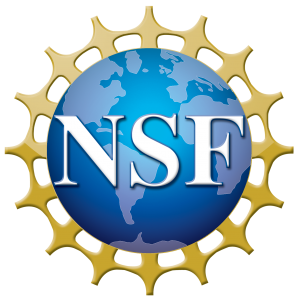By: Mady Docteur, Paige Hoen and Hailey Ramthun
1 March 2024
For the duration of the last two weeks in our RISEbio lab, our group has been diving into the beginning of our brain and behavior stream with our several chosen genes within the Green Anole Lizard (Anolis carolinensis). Since we have three group members, we chose three genes to study which are the following: DBP (D-box binding PAR bZIP transcription factor), PALD1 (phosphatase domain containing, paladin 1), and ABHD2 (abhydrolase domain containing 2). Each of these genes plays different roles within A. carolinensis. Specifically, ABDH2 is a protein coding gene involved in steroid hormone signaling. DBP is a transcription factor, meaning it is responsible for turning specific genes “on” or “off”. The genes DBP promotes are regulators of the circadian clock; therefore, DBP is associated with circadian rhythm pathways. Like ABHD2, PALD1 is also a protein encoding gene. The gene has been predicted to enable protein tyrosine phosphatase activity. Our end goal of studying these genes within A. carolinensis is to determine if there is a significant difference in the expression of the genes in the breeding vs. non-breeding season, along with male vs. female A. carolinensis.
To reach this goal, there are a series of steps our group must take. Since we began working with our chosen genes a couple weeks ago, we are in the beginning steps of our experiment. The first thing we did was investigate each specific gene, determine what each one is responsible for, and obtain the sequencing information, allowing us to design our own primers that we will be using to perform PCR (polymerase chain reaction). When designing our primers, we carefully analyzed multiple options to find the best suited for our genes. To do this, we checked for hairpin structures, heterodimers, and self-dimers. After our primers arrived, we reconstituted each primer. This meant adding the correct amount of water to each primer tube. Once this step was complete, we were ready to perform PCR and gel electrophoresis with each of our primers. PCR is a laboratory technique that amplifies a specific segment of DNA, and gel electrophoresis shows us our PCR sample amplicon size. Therefore, a successful primer will amplify the correct gene in PCR and will have the correct band size correlated with that gene with the gel results. During our first lab session of the week, we made positive and negative control PCR samples for each of our primer sets, as well as beta-actin. In total, we created 20 samples, so keeping track of each sample’s content was a vital component. The following lab session, we poured a 1.5% agarose gel and pipetted each of our samples into the gel wells. After running the gel, we took a picture of our results using the BIORAD Gel Doc™ XR+ Gel Documentation System. When analyzing our image, we found mixed results between our genes. We had a few primer sets that did not amplify anything; this could have been due to issues with the master mix, cDNA, incorrect pipetting, unsuccessful primers, etc. Also, we noticed contamination in our negatives. Even though we concluded mostly unsuccessful results, one primer set appeared successful for ABHD2 and amplified the correct band size at 142bp.

Moving forward, our next steps are to perform another PCR using the same protocol to continue analyzing our primers. We are currently testing all three primers again for DBP and PALD1. For ABHD2, we are only testing primer set one, for it appears to be working correctly. If DBP and PALD1 have negative results again, we will continue trouble shooting our PCR and think about doing a temperature gradient in the thermocycler. If ABHD2 primer set one is amplified at the correct band size again, we will move forward and perform a PCR cleanup. Since beginning our research, we have concluded that research takes a lot of trial and error. For example, our gel images do not always produce the results we expected. Although error is discouraging, it allows us to discover how to be researchers, practice our critical thinking skills, and learn that being a scientist takes time, patience, and determination to be successful.


